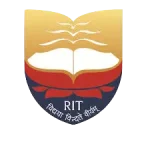Candidates should first obtain JLPT N4 certification, which qualifies them to attend interviews with Japanese companies. If the interview is successful, ZING LANGUAGES will coordinate with the employer and provide full assistance to the candidate.
Very few employers in Japan hire those who do not know at least conversational Japanese and ideally, you need to be at least JLPT N3 level for full-time roles.
The JLPT (Japanese-Language Proficiency Test) has five levels, from N5 (beginner) to N1 (advanced). N5 covers basic Japanese, focusing on simple conversations and common kanji. N4 expands on this with more vocabulary and grammar. N3 bridges intermediate skills. N2 and N1 are advanced levels, with N1 demonstrating near-native proficiency in complex reading, listening, and grammar.
This depends on your goals. If you start from a beginner level and aim to work in Japan in the future, you will need to study Japanese for about two years.
Knowing English is not necessary to learn Japanese, but it can be helpful. Many Japanese learning resources, including textbooks and apps, are available in English, making it easier to understand grammar explanations and vocabulary. However, you can learn Japanese through Tamil.
Japanese and Tamil share some similarities, particularly in pronunciation and certain phonetic aspects, which can make Japanese easier for Tamil speakers to learn. Both languages also have a Subject-Object-Verb (SOV) sentence structure. However, they are fundamentally different in grammar, vocabulary, and script, with Japanese using kanji, hiragana, and katakana, while Tamil uses its own unique script.
We teach in both languages. To help understand Japanese grammar concepts, explanations and examples will be provided in Tamil.
Absolutely. To improve the oral communication skills, we do arrange native-speaker sessions and improve listening skills by watching Anime.
Yes, school students can learn Japanese! Starting early can be beneficial as younger learners often pick up new languages quickly. Japanese is structured, with consistent pronunciation rules, making it accessible for students.

















